We first visited Spain seven years ago. We drank in the orange-laced air of Seville, watched the sun set over the Alhambra in Granada, and wandered the White Hill Town of Ronda. It was a lovely trip. Lovely and exhausting.
Even as people who try to pack a lot into their trips, we way overachieved, visiting five cities in seven days and then adding on side trips to Tangier, Morocco, and the Rock of Gibraltar. Given the chance to do things differently on our second trip to Spain, we decided to approach Barcelona without a huge agenda.

Things to do in Barcelona
There are so many things to do in Barcelona, it could make your head spin. The birthplace of Gaudi, Dalí, and Miró is a showcase of artwork and architecture. In the heart of Catalonia, cultural pride is evident in every morsel of food where eating and drinking are a regional pastime.
There is the beach, the shopping, the cathedrals, the museums, the street art. There is so much to do and see in Barcelona. But this time we took it easy and did exactly what we wanted.
Here are a few of the things we did while giving ourselves time to fall in love with Barcelona.
Stroll
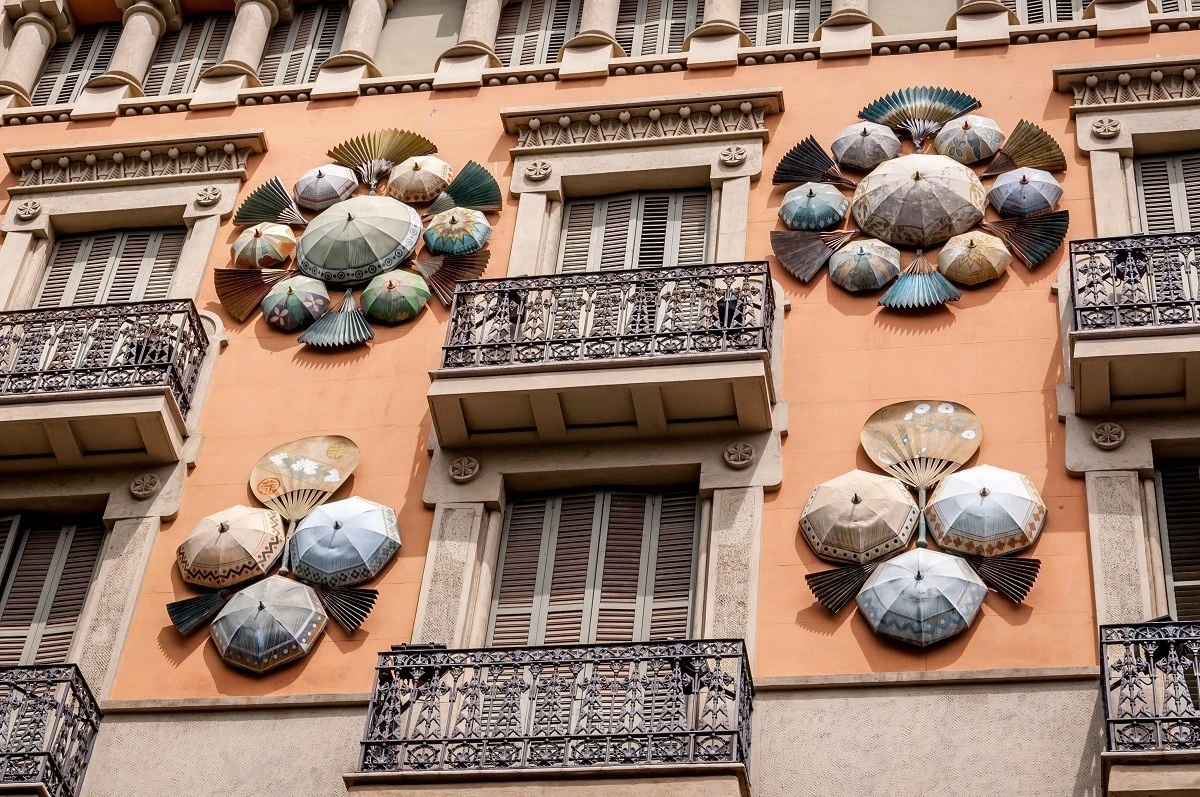
Barcelona is a highly walkable city. And walk, we did.
La Rambla is one of the city’s main pedestrian streets. It’s also one of the most touristy. At just about any hour of the day, La Rambla is filled with people stopping in souvenir stores, having sangria at a café table, or watching the costumed “human statues” who pose along the walk. Some people absolutely hate areas like this, but we are not among them.
While it’s certainly not the most “authentic” of things to do in Barcelona, a walk along La Rambla provides great opportunities for people watching and enjoying the ambiance.
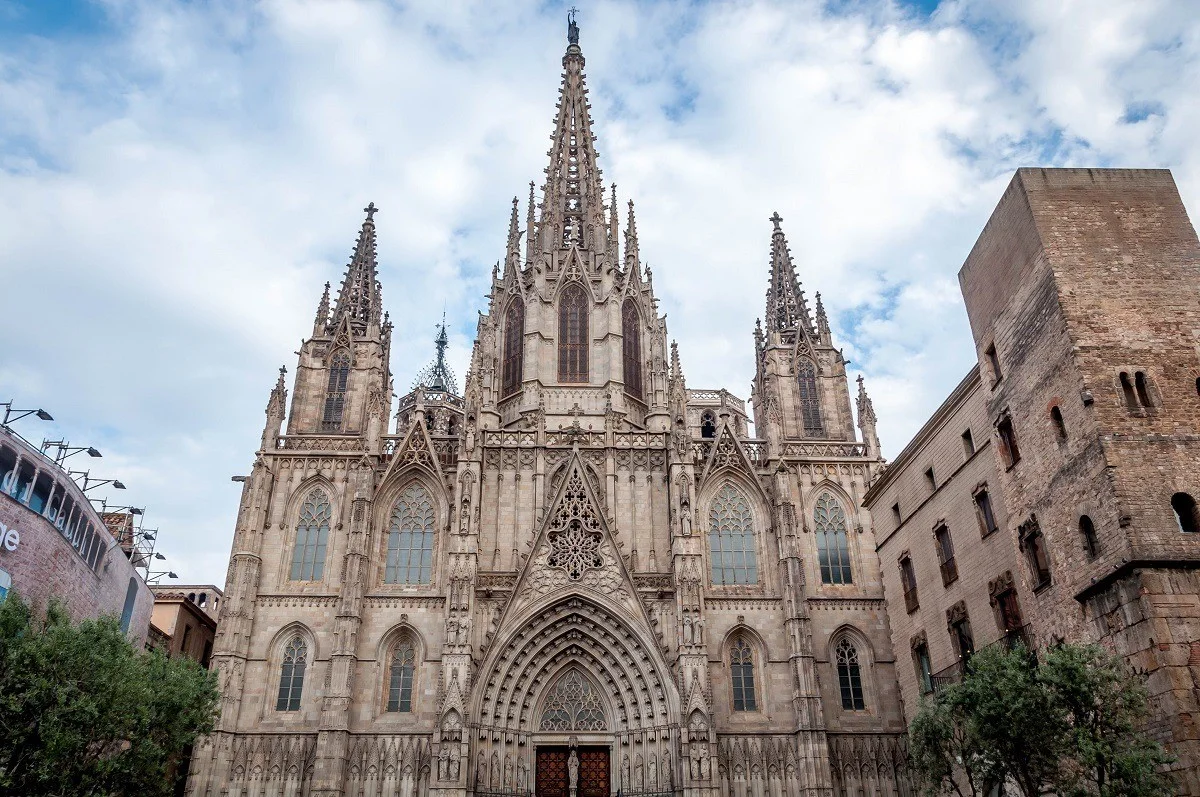
Also on the touristy (but vastly more historic side) is the Gothic Quarter (Barri Gòtic). This area of the old town is generally characterized by narrow, cobblestone streets with tall, old, sometimes-elaborate buildings.
Some of the small lanes in this labyrinth of streets open up into charming squares. Others pass by structures that date from medieval times, some as far back as when the Romans settled here.
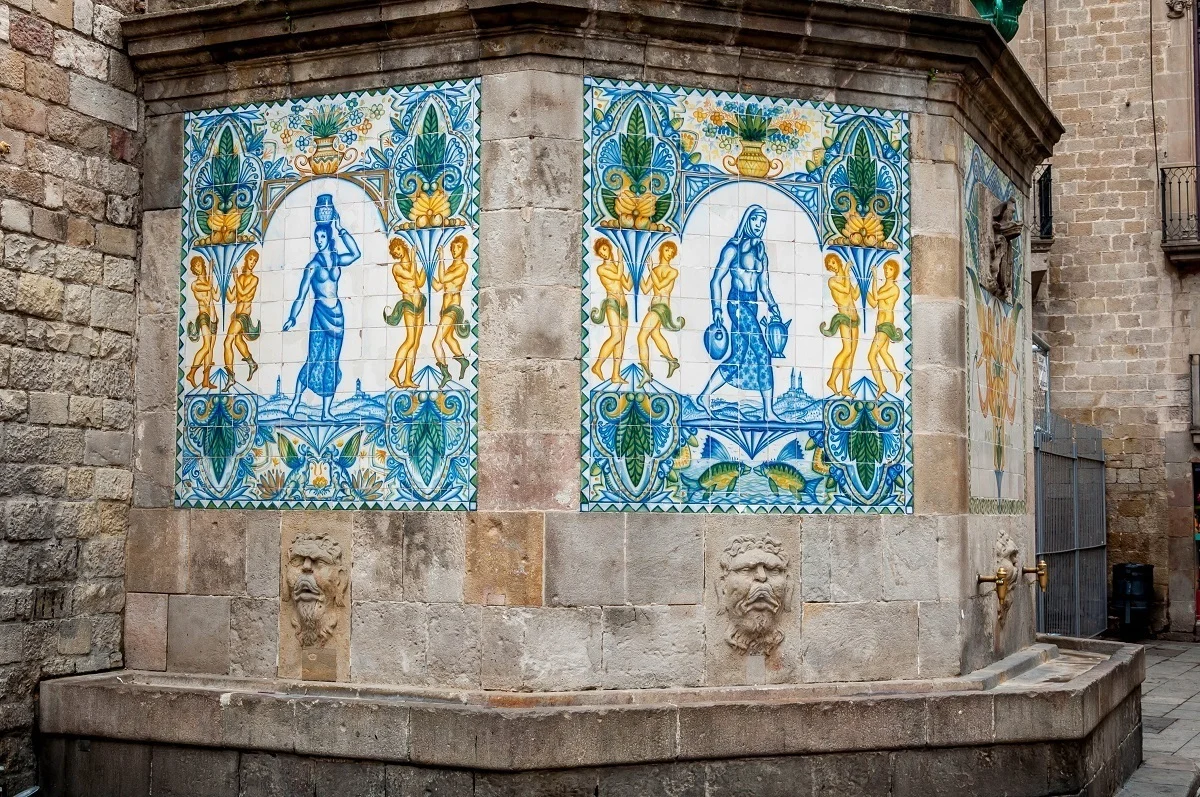
There is also the Passeig de Gràcia, a main shopping street that is one of the most expensive not only in Barcelona but in all of Spain. Everything from Louis Vuitton to Burberry to Apple lines this posh street that’s also punctuated with gardens, fountains, and Gaudi’s Casa Batllo.
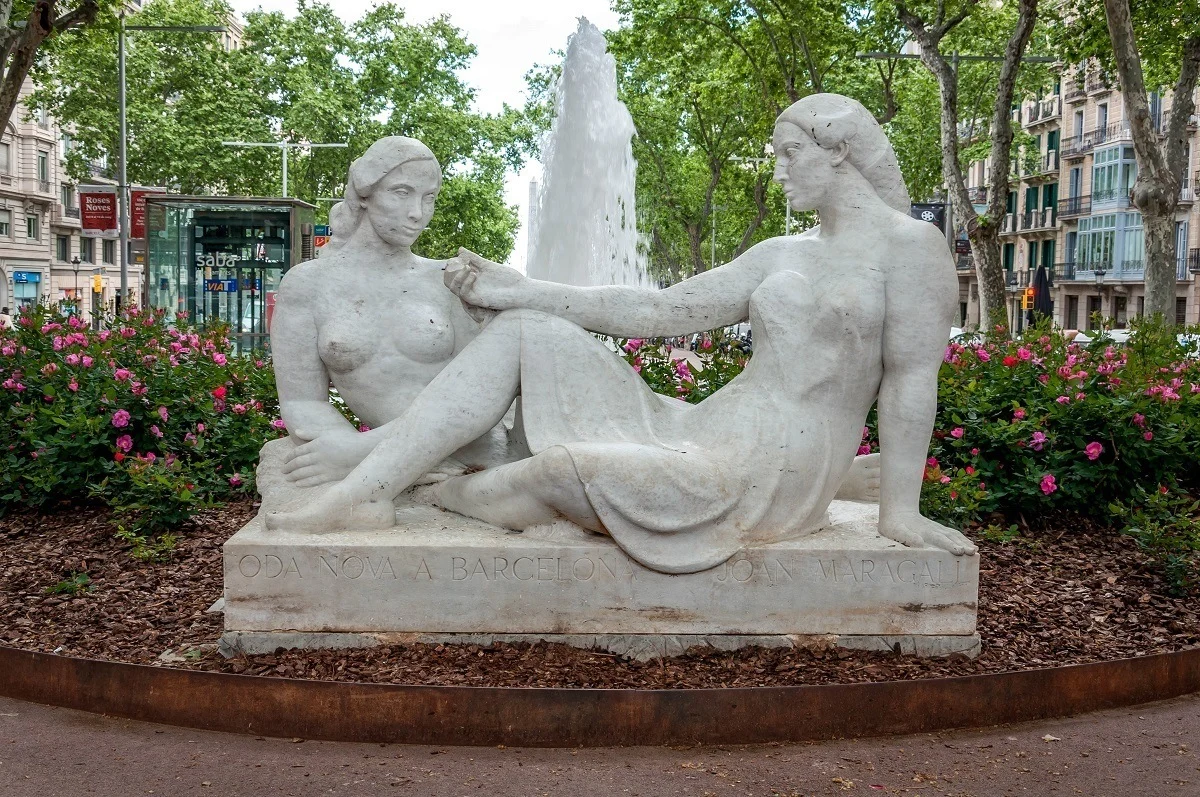
One subway stop from the Passeig de Gràcia is the tight-knit neighborhood of Gracia. The enclave, which was an independent town until the late 19th century, has a unique population mix.
As a traditional barrio, Gracia has a large elderly population, but it’s also popular with artists and a more bohemian crowd, which makes for interesting people-watching and great tapas restaurants. If you are looking for a vacation apartment or Airbnb in Barcelona, this is the neighborhood for it.
Eat
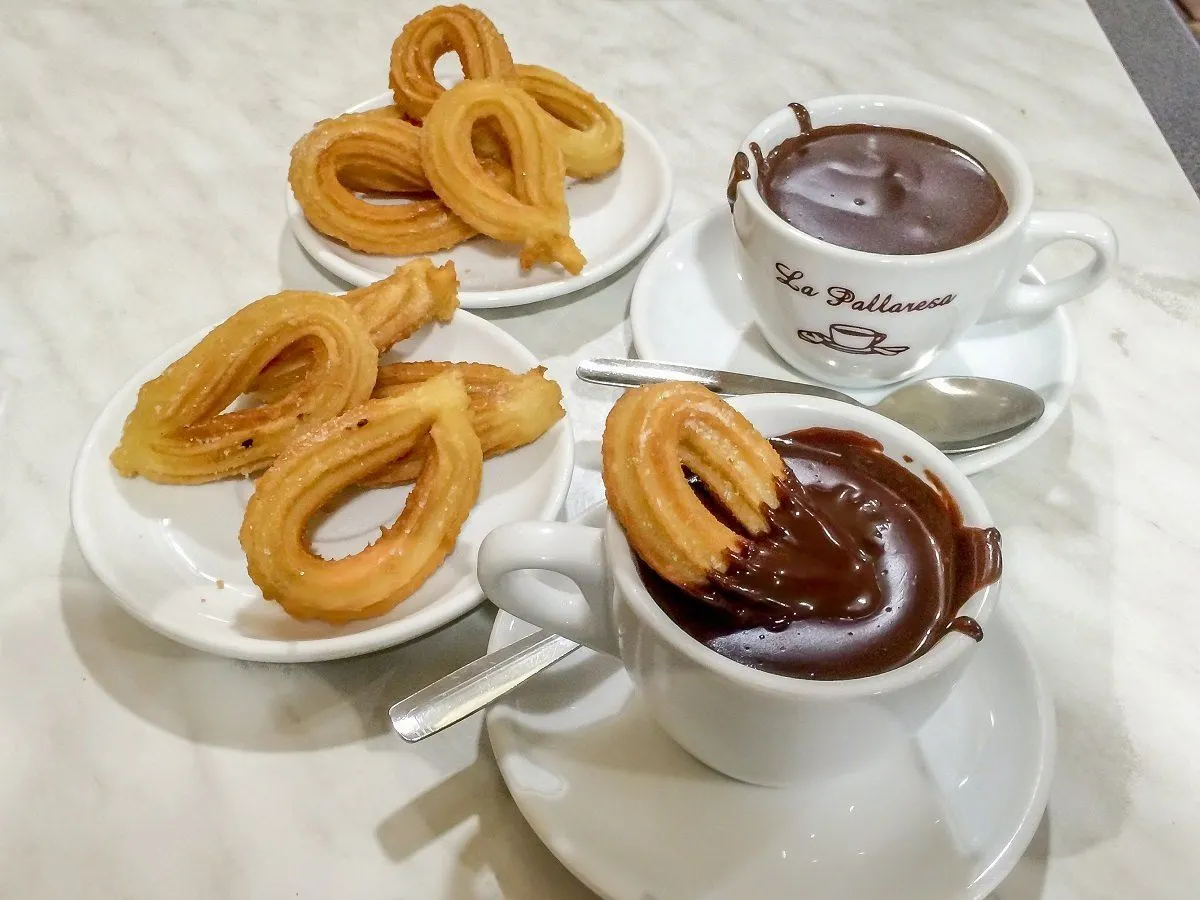
All over Barcelona, sidewalk cafes beckon passersby, legs of jamon hang seductively over tapas bars, and gin and tonics are crafted with precision in goblets the size of small basketballs. Eating and drinking in Barcelona is life. And we weren’t about to miss out on this important part of enjoying Spain.
One of our first stops in town was at the traditional snack bar La Pallaresa for churros and chocolate. Churros are heavenly sticks of fried dough rolled in perfect proportions of cinnamon and sugar. Done right, they’re crunchy on the outside with just a touch of softness in the middle.
And then comes the dipping chocolate. Absolute bliss, and the ideal snack to tide you over between lunch and the impossibly late Catalonian dinner.
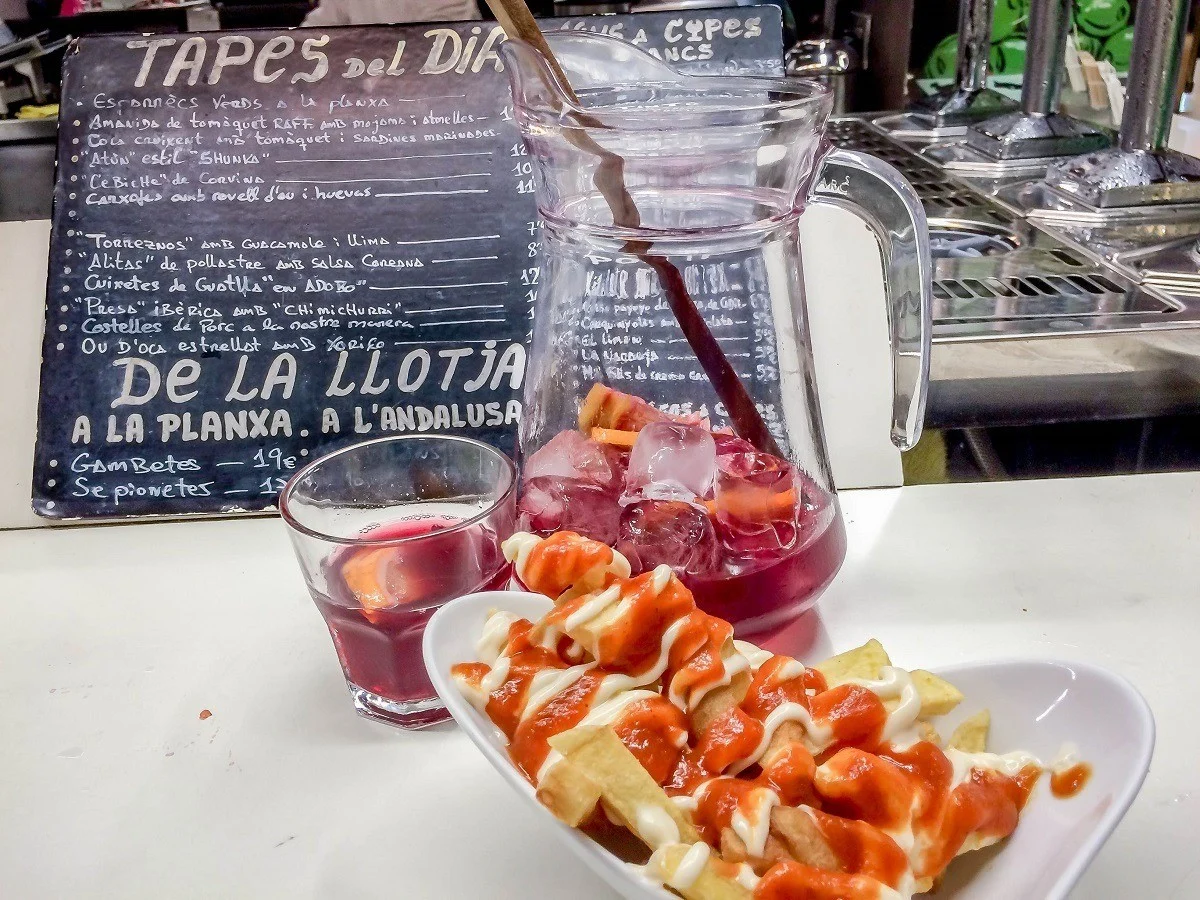
And that dinner, of course, was tapas every night. Tapas is pretty much our dream meal. You can try a few bites of all different kinds of things, usually for just a few euro.
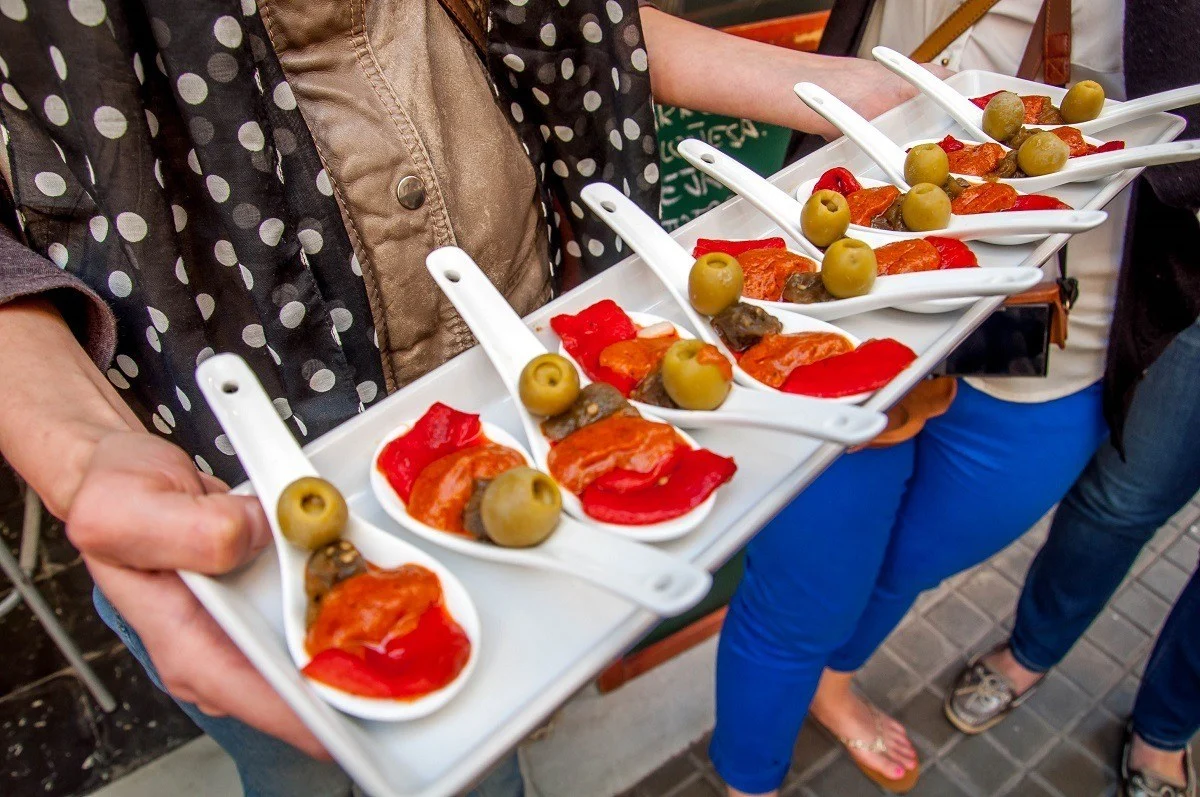
In most restaurants we visited, there was a menu of the tapas offered every day, and then you could see the day’s specialties freshly made at the bar. We had no trouble finding menus in English, but when ordering specials, we found it was best just to point to what we wanted.
We went with old favorites like patatas bravas (fried potatoes in a spicy sauce), tortilla (a thick omelet often made with potatoes and some type of meat), and shrimp. There were also regional specialties like pa amb tomàquet (tomato and garlic on bread), which is way more delicious than it sounds, and a bomba (meat-stuffed croquette with aioli and spicy sauce).
The food tour we took with Devour Barcelona Food Tours also gave us a chance to try things a bit out of our comfort zone like salted cod and sardines. It was a good thing we did so much walking.
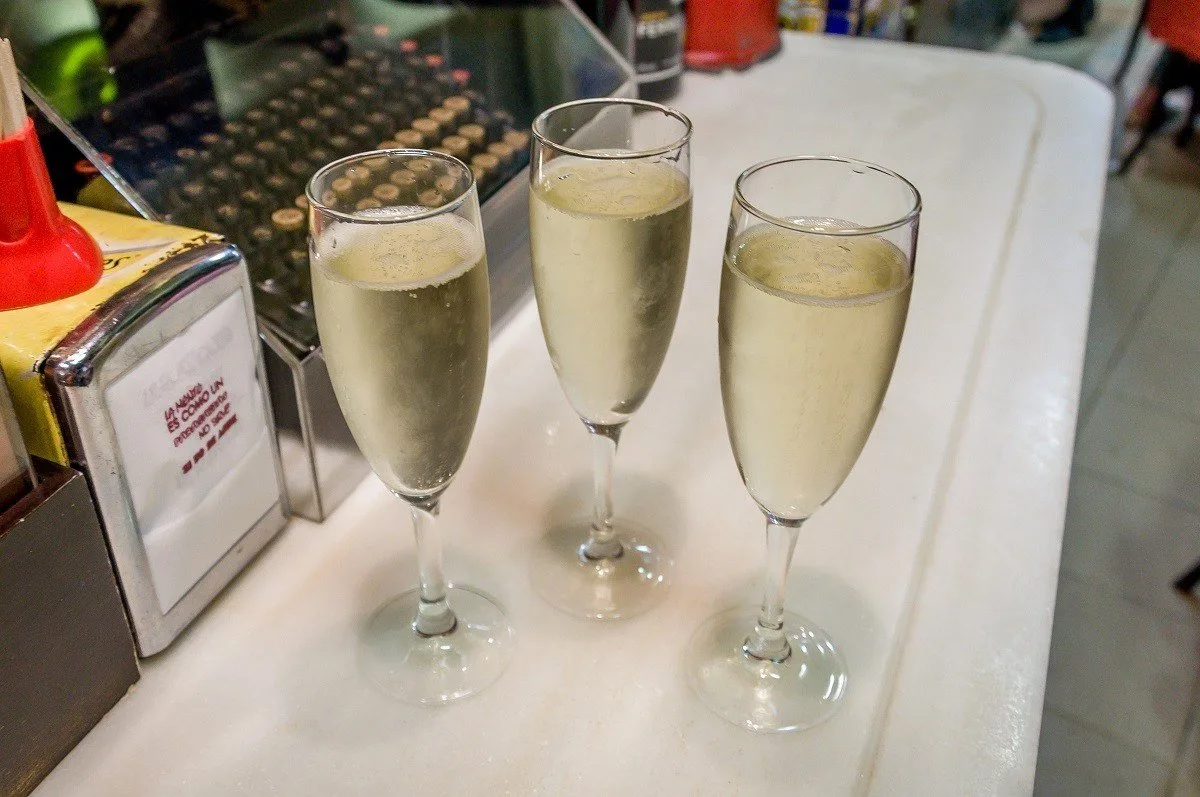
Of course, it’s not all about the food – drinking is also one of the more popular things to do in Barcelona. Everyone knows about sangria, and gin and tonics have been elevated to an art form here. But one of the more popular and inexpensive beverages in Barcelona is cava.
A sparkling wine produced primarily in Catalunya, cava is available for just a few euros per glass with a food order at Xampanyeria bars (many near the Barceloneta stop). You can spend a lovely afternoon imbibing, snacking, and people watching in the colorful bars.
Just beware of what you’re eating – the tapas become endless, the jamon becomes expensive, and before you know it, your bill can become quite steep.
Dance
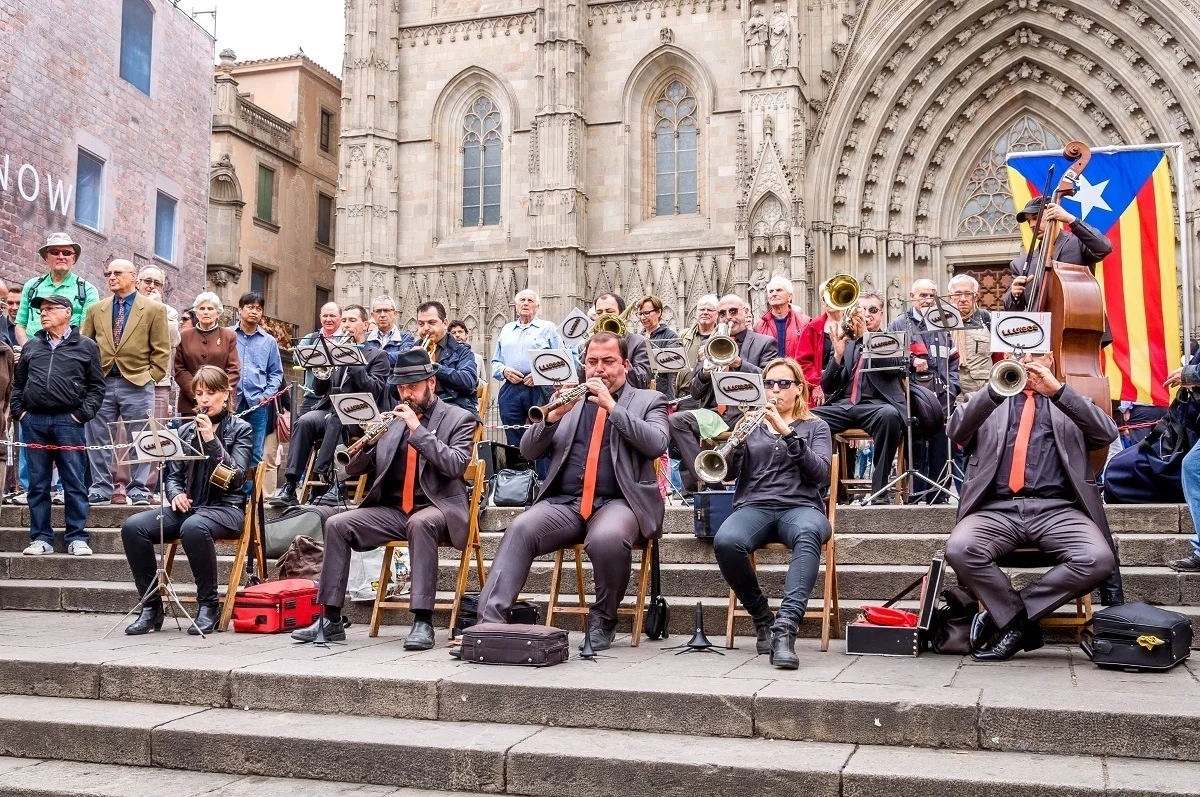
We heard it before we saw it. Passing through one of the lanes in the Gothic Quarter, the sound of the horns was unmistakable, but it certainly didn’t seem to be buskers trying to make a few euros on the street corner.
After a few minutes of following the music, we found ourselves in the plaza that opens up in front of the Barcelona Cathedral. On the steps of the Cathedral were a dozen or so musicians wailing on their instruments, a huge Catalan flag flying behind them. A few yards away, a circle of people, arms raised, stepped in unison.
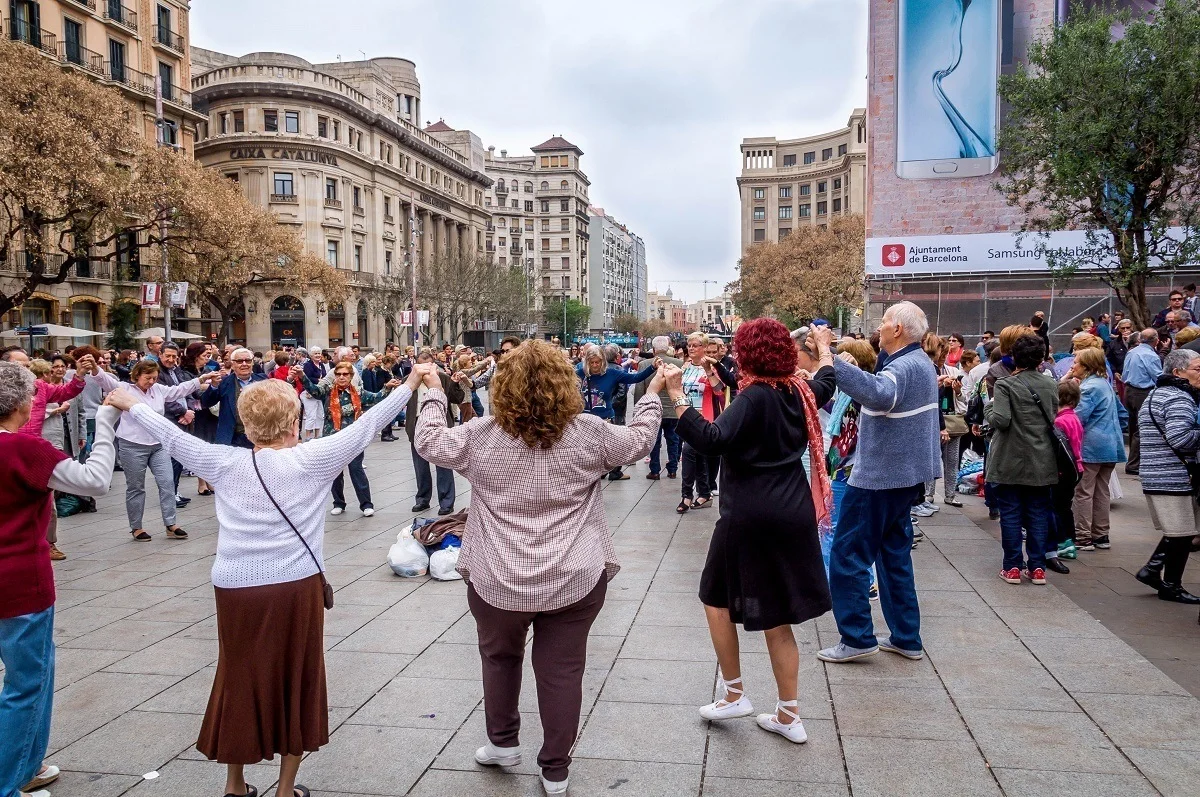
The dance, known as the Sardana, is a symbol of pride and identity—the national dance of Catalonia. The dance itself is quite simple. There is no formal attire, and men and women can participate solo or in couples.
Dancers form a circle and hold hands with raised arms. They follow a leader who dictates the steps and timing. When a circle gets too big, participants break off to form another circle until the space is full.
Though somewhat slow and measured, all the people dancing in unison depend on the others knowing what they’re doing to keep the dance moving smoothly. As a result, we decided it was best to stay on the outside.
See Gaudi’s Masterpieces
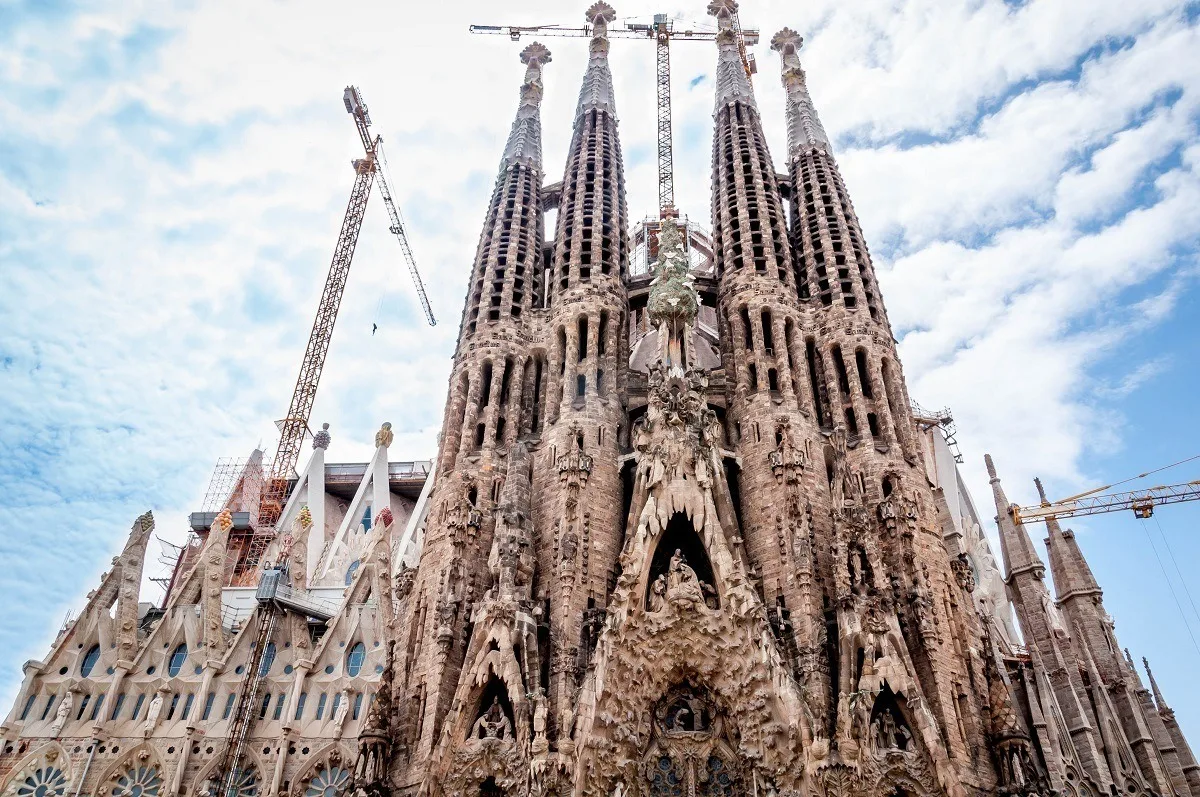
The works of Antoni Gaudi dominate Barcelona. His Modernist buildings are almost impossible to avoid. As you wander the streets of Barcelona, they just seem to pop up. But, then, why would you want to avoid them?
Even for people like us who are not avid architecture buffs, the fanciful, multi-colored creations of Gaudi suck you in with their playful quality, unusual construction, and remarkable details everywhere you look. Quite unexpectedly, Gaudi’s works were some of the things we loved most in Barcelona.
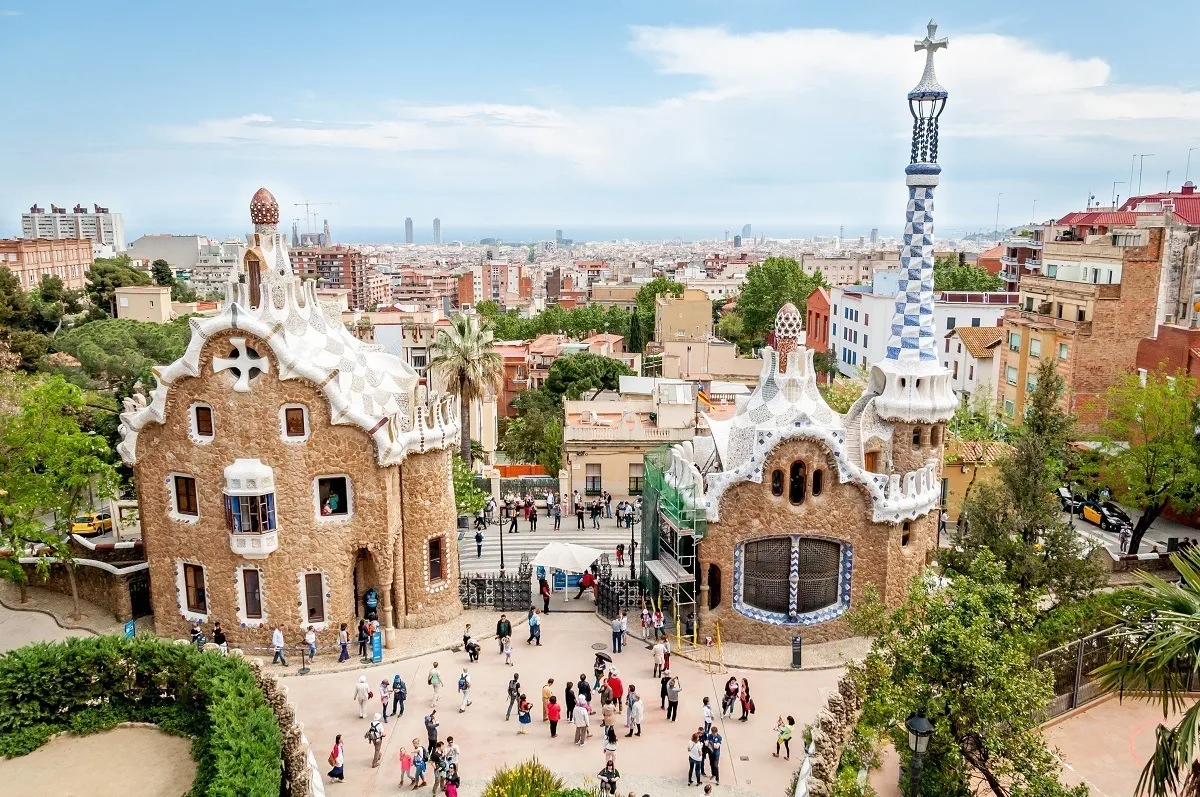
Gaudi’s most famous project is, unquestionably, the Sagrada Familia. Under Gaudi’s lead from 1883 until his death in 1926, Sagrada Familia opened for the first time in 2010. The interior of the church nearly defies words.
On a sunny day, the sanctuary is illuminated with all the colors of the rainbow as the light streams through the stained glass. On the exterior, scenes from the Bible adorn the façade while spires that look like they’ve been plucked from Dr. Seuss soar over 500 feet in the air. A feast for the senses.
A few kilometers away, Park Guell is similarly colorful and even more fanciful. The park was originally designed to be a planned community for the wealthiest residents of Barcelona, but things didn’t quite work out.
Instead, the development became a massive park with benches decorated in colorful broken tile, sweeping arches and walkways, and buildings that look like they came from the Candy Land board game.
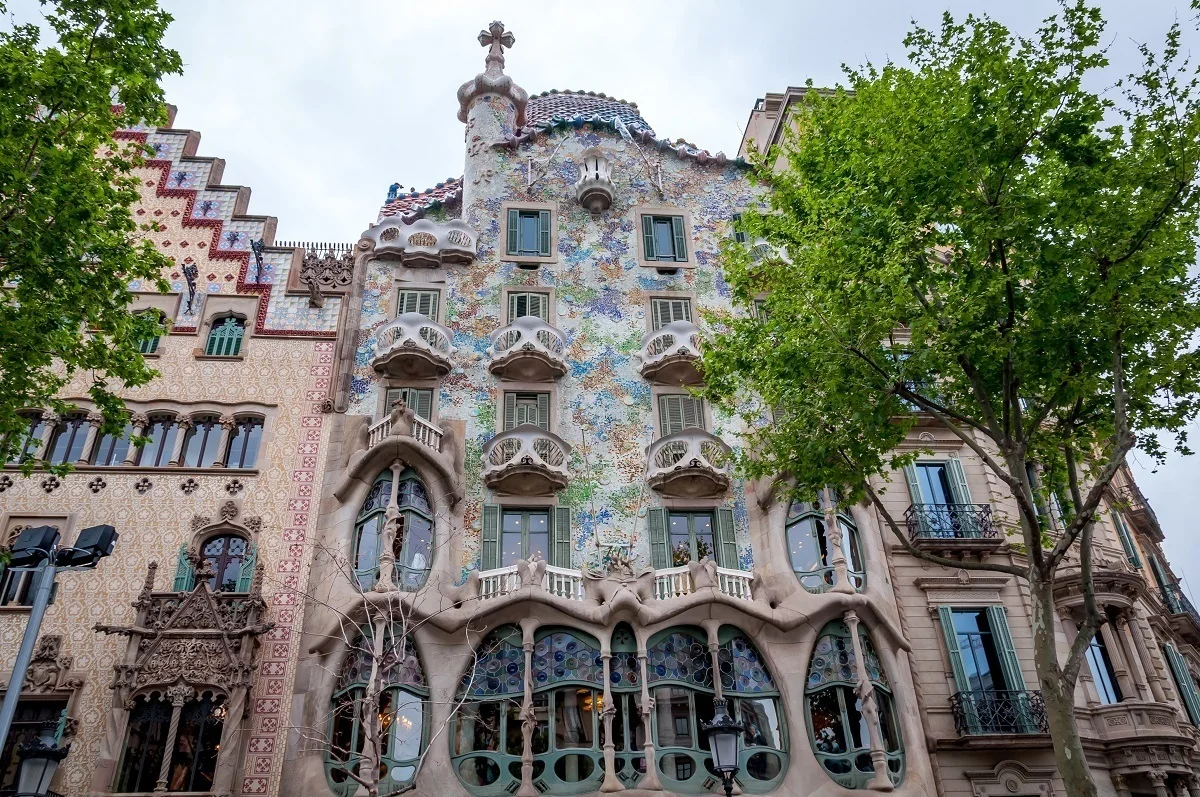
Gaudi also took on slightly smaller projects like the Casa Batllo, known at the House of Bones for its slightly creepy looking exterior. Casa Vicens, the first house designed by Gaudi, was commissioned in 1877 and still stands in the Gracia neighborhood. There is also Casa Mila, with its wavy, undulating façade, among many other works.
Browse the Markets
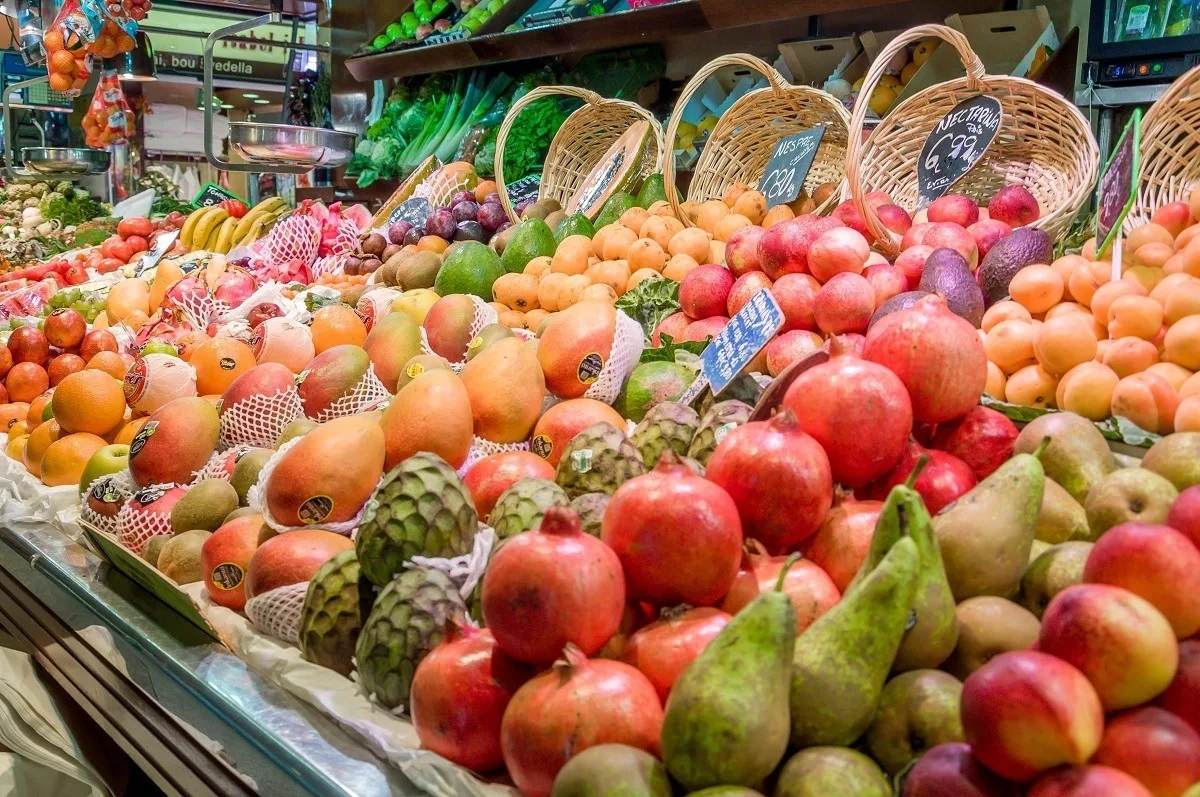
Food markets are the way to our hearts. Whether in the small towns of Provence, the outskirts of Siena, or the center of Barcelona, if there’s a food market around, we’ll be there.
The most famous market in Barcelona is La Boqueria, right in the heart of La Rambla. This colorful, indoor market features all the produce, meats, and cheese you could imagine, at slightly inflated prices due to its prime location.
La Boqueria also has plenty of food stands and lunch counters to have everything from traditional Spanish sandwiches to oysters and cava. Visiting here is one of the most popular things to do in Barcelona.
We loved walking around La Boqueria, being taken in by the scents and sights of the bustling market, but it was a bit too crowded for our comfort.
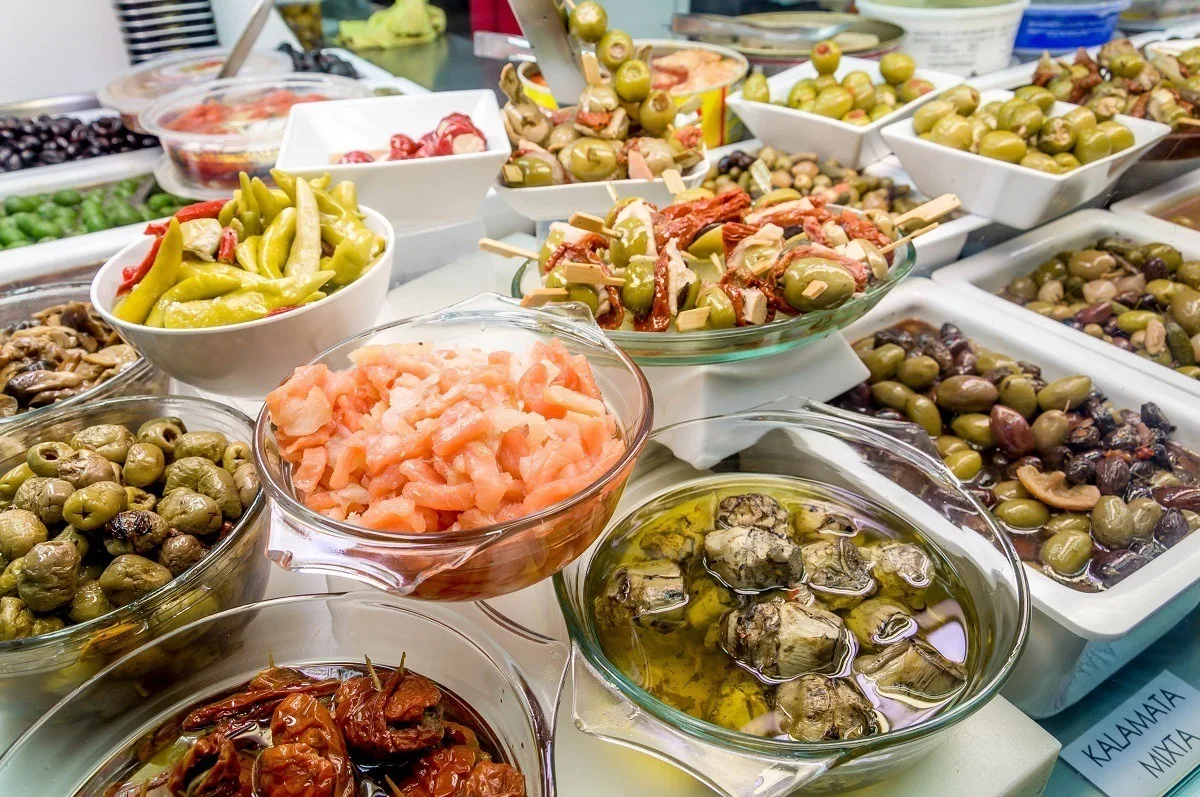
We also had the chance to visit the Santa Caterina and Abaceria Central markets. Its distinctive curving roof and location near the Cathedral make Santa Caterina tough to miss. First built in 1845, it was renovated in 2005. It has many of the features of La Boqueria without nearly as many tourists.
Even further off the tourist path, Abaceria Central in the Gracia neighborhood is teeming with everything from specialty olives to some of the best cheeses we’ve ever had. Both markets are worth a visit if you’re looking for a snack or get suckered in by all the delicious things like we do.
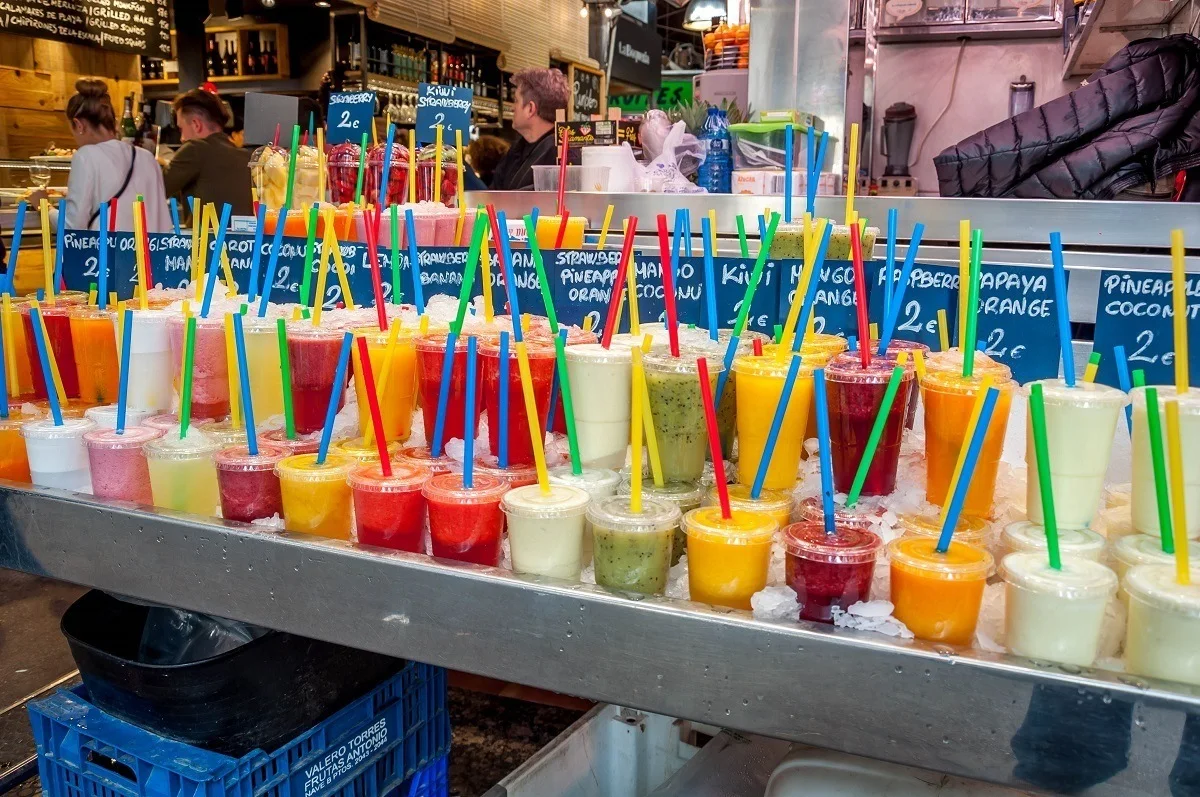
While we’ll probably never stop trying to pack in all the things, it’s nice to travel without an agenda occasionally. Sometimes just wandering and enjoying is the best way to fall in love with a city.
Laura Longwell is an award-winning travel blogger and photographer. Since founding Travel Addicts in 2008, she has written hundreds of articles that help over 3 million people a year get the most out of their travel. In that time, she has visited nearly 60 countries on 5 continents, often returning to favorite destinations over and over again. She has a deep love of history, uncovering unexpected attractions, and trying all the good food a place has to offer.
In addition to Travel Addicts, Laura runs a site about her hometown of Philadelphia—Guide to Philly—which chronicles unique things to do and places to see around southeastern Pennsylvania. Her travel tips and advice appear across the web.

Rhea Taylor
Thursday 29th of September 2016
Hi Laura, just came across your blog today. We will be visiting Barcelona sometime early next year, and I am very excited to find this blog and get some tips for our trip. Also we will be visiting Italy too so I will be hanging around your site and be reading more ? Thanks for the infos and a nice blog.
Laura Longwell
Friday 30th of September 2016
Have a wonderful time! Two great destinations.
Amalina Davis
Wednesday 25th of May 2016
I'm probably a bit biased because I lived in Barcelona for 6months, but its one of those places you can't get enough of! I'm glad you mentioned Gaudi in the post because a trip to Barcelona would simply be incomplete without admiring Gaudi's works.